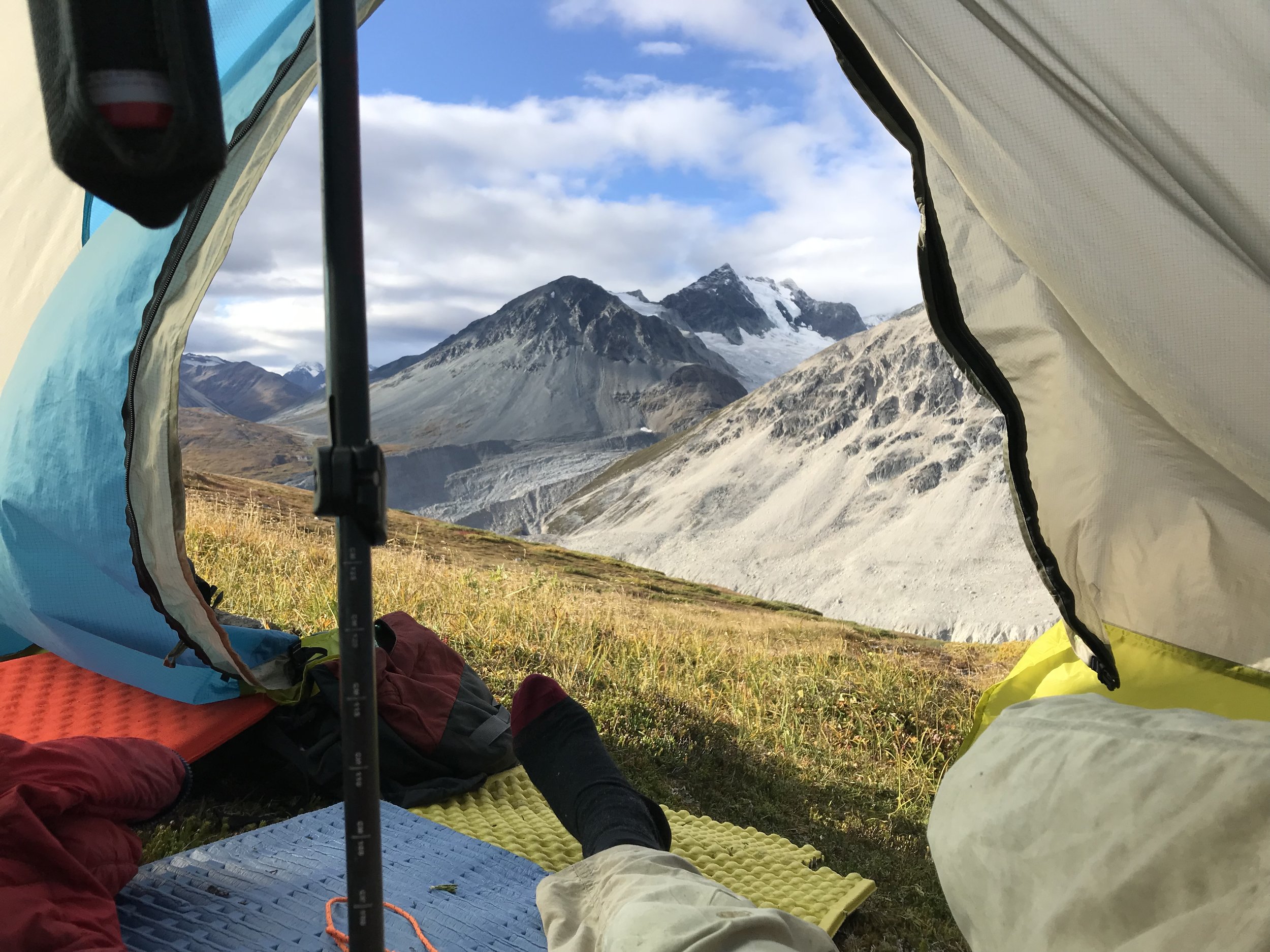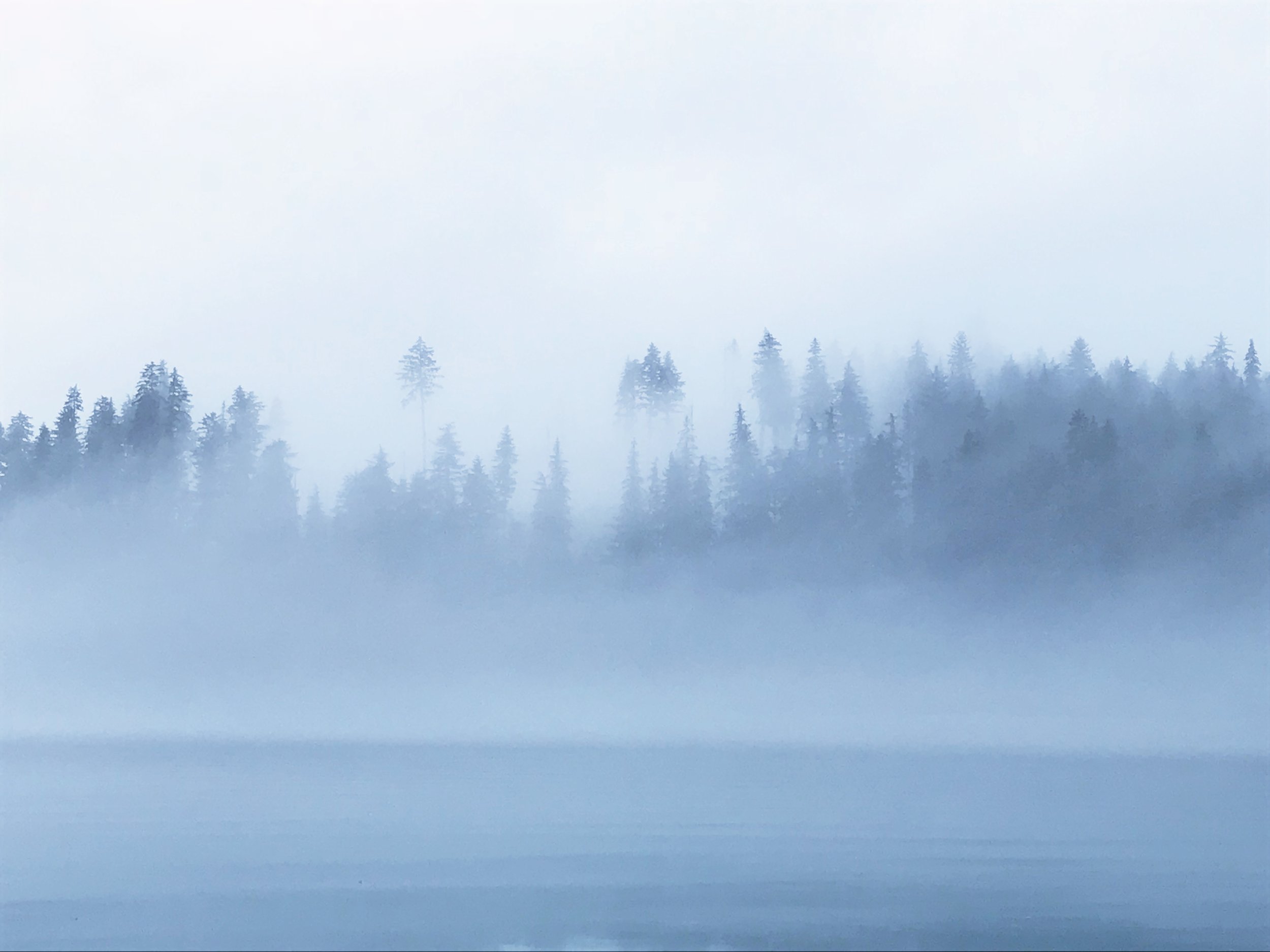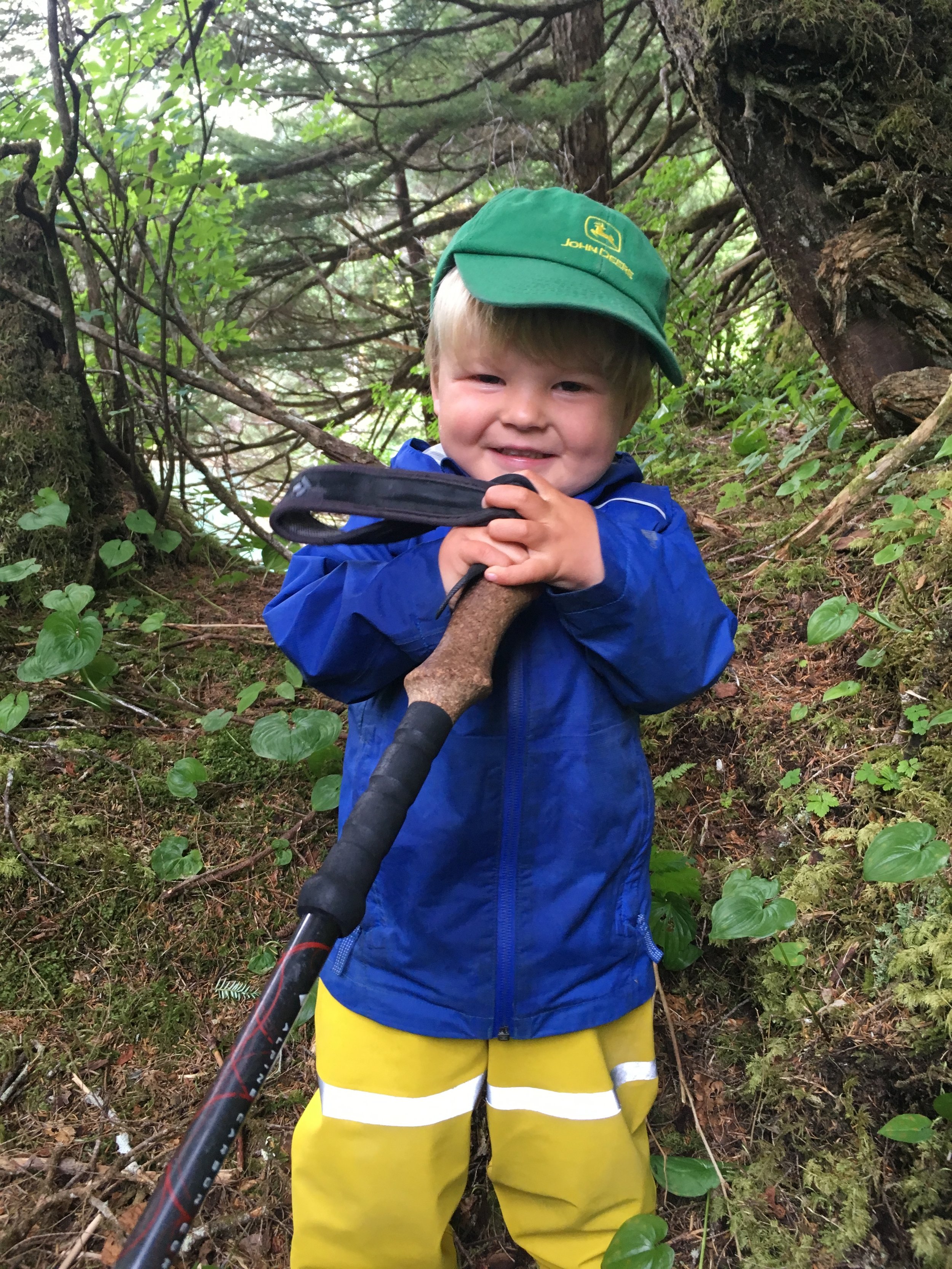We are now solidly in Alaska, cruising up the west side of Prince of Wales Island. We’ve had an incredible stretch of southeast sunshine, eight days and running. With the sun, though, comes the northwest wind, which has made sailing difficult or impossible many days. We can plot our course by looking up at the wind vane: whichever way the wind is blowing is opposite the direction we intend to travel. But for now, we will take a little motoring in exchange for what feels like a pleasant, cooler version of the tropics, with spruce and cedar forests, black bears, wolves, and salmon. This morning, Pat woke up to a humpback blowing in the cove where we were anchored and, soon after, we heard sandhill cranes, and spotted a black bear on the beach. On the southern part of the island, which is a designated wilderness area, there is little sign of logging or other disturbance. By the time this posts, we will likely be a bit farther north, near the communities of Craig and Klawock. We’ve had a full week and a half, with the crossing of Dixon Entrance into Alaska, a visit from our first sleep-aboard guests, and more wildlife sightings as we travel north.
Six years ago, we spent several nights camped at Cape Fox, a small point of land that juts out into Dixon Entrance just north of the Alaska-Canada border. On that trip, we were traveling north in our 18’ rowboats in April. We hadn’t seen another boat for days. We stopped at Cape Fox to take shelter from a gale that quickly turned into a storm. After the first night, we thought the weather might be improving so poked out several miles before being chased back, frightened and humbled. Soon, the wind blew so hard that ferries were cancelled, sea spray reached us far inland, and we clearly had no business being out in small boats. This time around, in mid-July, the sun shone and the water was as still as Dixon Entrance ever is, with just a low westerly swell that rose to meet the rocks with a quiet, steady crash.
To assuage our sentimental sides, and give us all a chance to stretch our legs after 2.5 days straight on the boat, we decided to stop here with the boys and visit our old campsite. We anchored in the small, sheltered bight between Fox Island and the mainland, then rowed Marshmallow to the same beach where we’d landed our rowboats, desperate and relieved. The afternoon was warm, and we planned on a quick stop so took only a basic shore kit. With the boys, we passed our old campsite by the enormous cedar tree, then hiked over to the other side, where a quarter-mile long beach offered tidepooling, sand running, deer tracks, and memories. But just as we began to eat our sandwiches, the sky unleashed. Within ten minutes, we were all drenched. By the time we got back to Marshmallow, two inches of water stood on its bottom. As we climbed onto Chaika, I heard: “It’s good we have our water shoes on for all this rain, isn’t it, Mommy?” Huxley‘s knack for pointing out the seemingly obvious, with a toddler’s version of the profound, is becoming legendary in our family. Most recently, while relieving himself overboard, he commented, “When we pee in the ocean, it gets fuller.”
That night, we anchored at Foggy Bay, where we met a friend-of-a-friend from Haines, whose 27’ boat was moored near ours. They had been waiting for four days to cross Dixon Entrance so we considered ourselves lucky to have a quick transit, with only moderate swell. The next morning, we went to explore the interesting reef and coastline. Pat and I often take turns exercising on shore. One of us hunts for crabs or goes for a mini-hike with the boys while the other comes up with a workout of sorts—beach sprints, dips on a log, push-ups in the sand. Anything to keep us from feeling too boat-bound and sedentary. That morning, I exercised, we swapped, and then it was Pat’s turn. There were berries on shore so the boys and I were busy picking. Pat was occupied by squat jumps when he looked up and saw Marshmallow, our dinghy, floating away with the wind. We always tie off Marshmallow, even when the tide is falling, in part because adventures with the boys carry us to unknown destinations with an unknown schedule (though we can pretty much count on everything taking longer than we ever imagined). Except this time of course. There weren’t any logs or rocks nearby for a convenient tie-off so we carried Marshmallow high up the beach and figured we would be right there to watch her anyway. Famous last words. As Pat sprinted down the beach and into the water, the boys squealed with excitement, “Go daddy, go!” Pat managed to reach the dinghy just before he had to start fully swimming. With the only neighboring boat now gone and a mile-wide bay for a dinghy to drift across, it could have been an epic morning instead of an entertaining spectacle for the boys.
We arrived in Ketchikan the next day to check in with Customs, resupply, and meet my parents who would be our first sleep-aboard guests. Unlike our last stop there in April, the city was in full summer swing, with more float planes, cruise ships, and fishing boats coming and going than I’ve seen just about anywhere. After encountering few people and little such activity for quite a few days, the busyness felt jarring, but the visit from my parents made up for any culture shock. The boys were thrilled to see Yaya and Bumpa and kept them busy on the boat and on shore, teetering from one side of the deck to the other, turning over every rock on the beach, “watering” weeds on the dock, and providing instruction on how the various parts of Chaika work. “OK, Yaya, now step here, and hold onto this rail, yep, right here, OK, now over the lifeline, see how I’m doing it.” Like ususal, my parents seemed to find the accommodations just fine when we headed out for an overnight sail to southern Gravina Island. As Huxley had so carefully planned, our family of 4 squeezed into the V-berth and my parents got cozy on the fold-down table. Huxley has developed the habit of migrating out of his nook created by a lee cloth and sleeping squarely in the middle of the V-berth. The fact that two adults were now occupying this space seemed to do little to discourage him and both Pat and I thought we were shoving each other out of the way when in fact it was Huxley we were wrestling all night. A small person with a big presence, even while sleeping.
But size, of course, is simply a matter of perspective. Pat happily informed me one evening while we were in Ketchikan working late in an attempt to finish all of our town tasks, “The boat has been feeling much bigger to me lately.” All of the hatches from the engine compartment were piled on our bench-turned-bed, an assortment of electronics, kids’ books, and dirty dishes were covering our single table, and the groceries we had just bought and not yet stored away covered the modest galley countertop. Spacious wasn’t exactly how I would describe our surroundings. Incredibly, he wasn’t joking, or even speaking in metaphorical terms. The boat just felt big. Go figure.
We woke on our last morning in Ketchikan to the fog horn blowing through a sky of mashed potatoes. By the time we pulled away from the dock, the sun had largely burned off the fog and we were happy to steer away from the busy channel. The fog worsened, though, just a couple of miles from town and we fine-tuned the operation of our radar, squinting to make sense of boats, reefs, islands. And, as it turned out, whales. Out of the mist to our port rose two orcas, likely a mother and calf judging by the size of their fins. Close enough to see even in the dense fog, the whales paralleled our course for several minutes before disappearing again. When two specks danced across the screen a few moments later, we worried that an unseen boat was approaching until we saw the whales surface again, this time with a third companion. For the next hour the trio swam near Chaika. Their sleek black fins rose magically from the surface before slipping into the fog, then appearing again as blips on the radar screen.
We plan to head north along Prince of Wales before veering west toward the southern tip of Baranof Island, making our way toward Sitka via an outside route. However, if the winds continue to blow against us, and strengthen as predicted, we may need to change course.




































































































































































































































